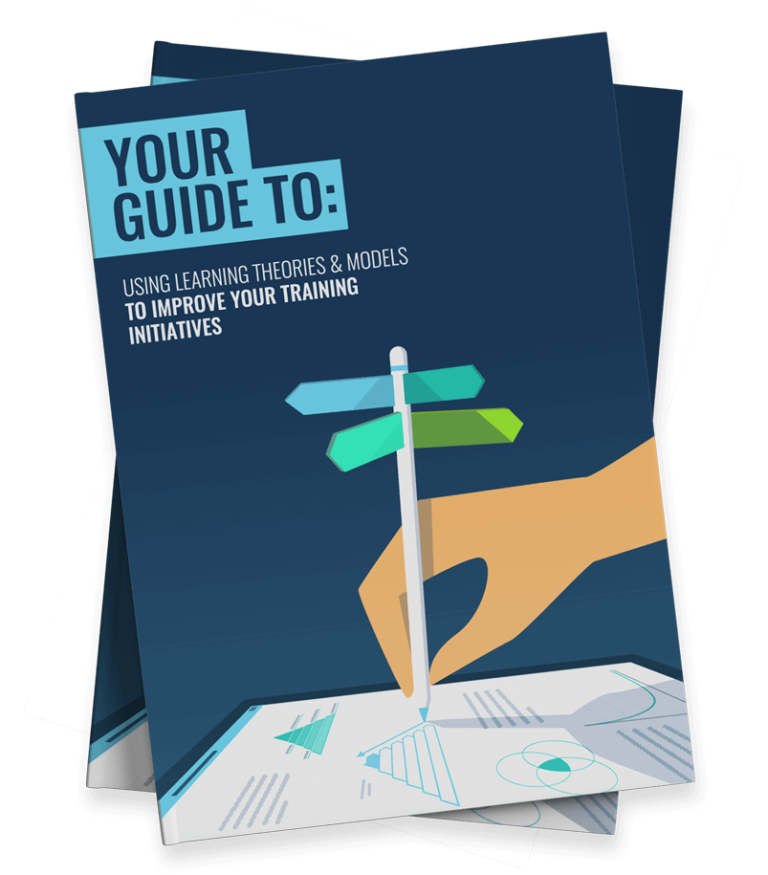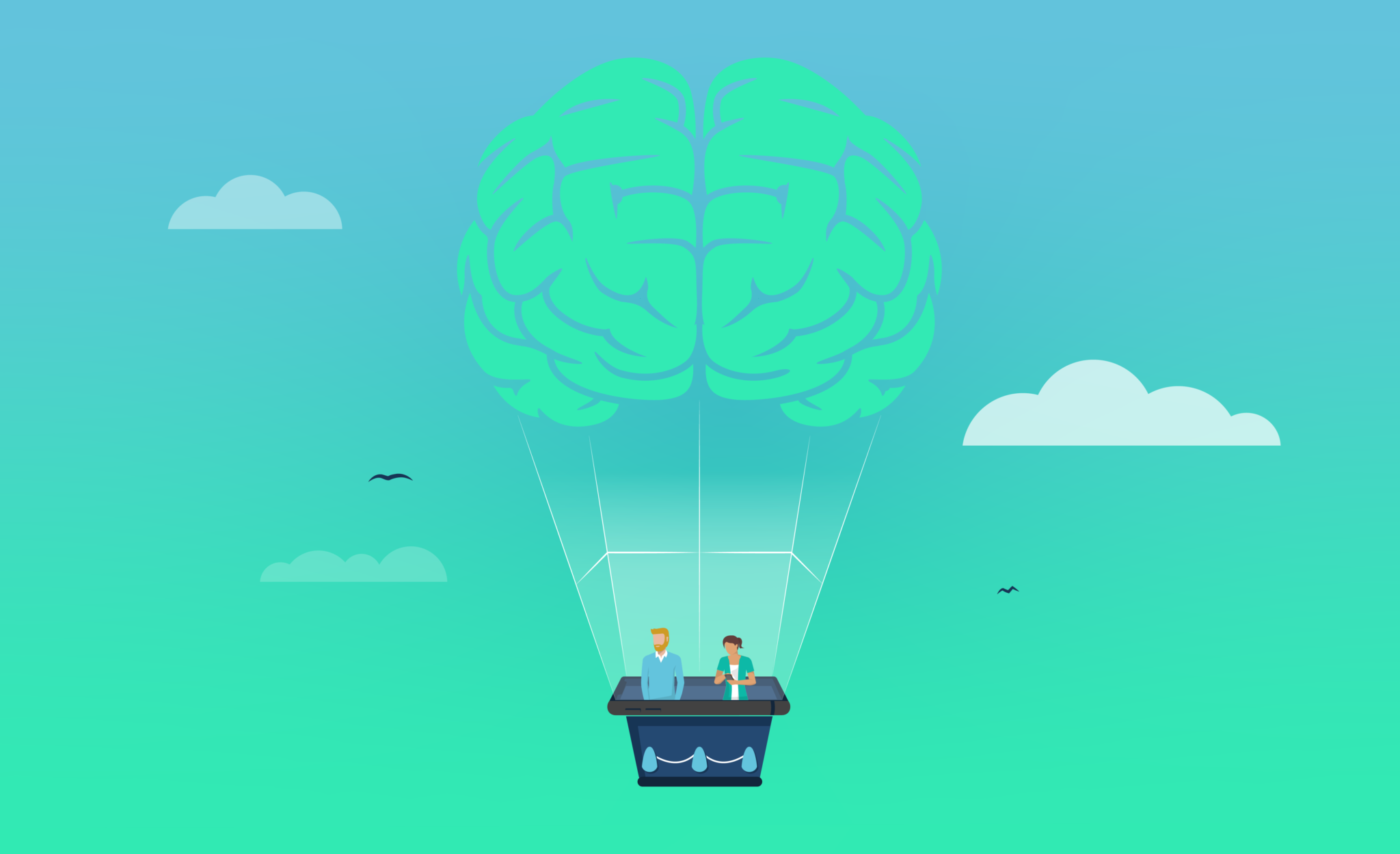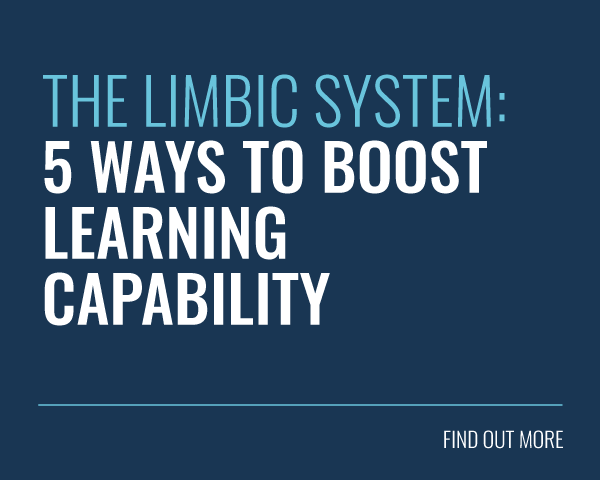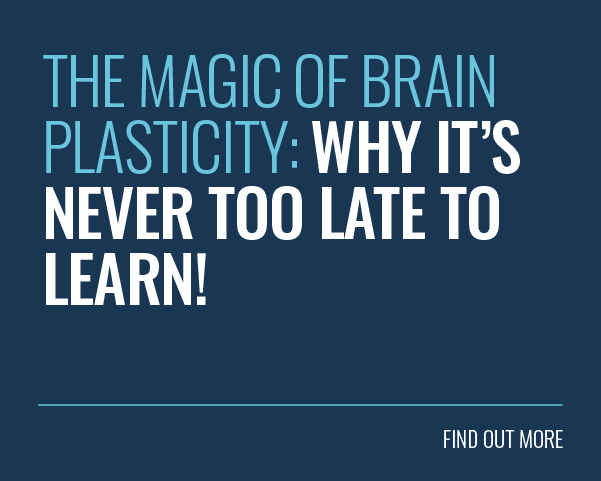If it wasn’t for the forgetting curve, you’d remember everything you’ve ever been taught. That’d make you a genius on a level that would make Einstein envious.
This makes the forgetting curve the arch-nemesis of learning and development (L&D) departments across the globe. But, wouldn’t life be boring if everything was that easy?
In fact, we are lucky to know about the forgetting curve. After all, it tells us important information about our memory and knowledge retention — key ingredients for successful learning.
Understanding how the curve works can help you to take action and prevent yourself from forgetting new skills or information. But what exactly is it, and how does it work? This article will run you through the memory model, its history and ways to combat the curve!
Ready for a memorable journey? Let’s go!
What is the Forgetting Curve?
The forgetting curve is a memory model created by German psychologist Hermann Ebbinghaus. In fact, you might also see the model referred to as Ebbinghaus’ Forgetting Curve.
In a nutshell, the memory curve shows how we lose information over time if we don’t try to retain it. As such, understanding this model helps us to combat and conquer memory decay — once and for all!
Ebbinghaus’ Epiphany: Where Did the Model Come From?
In the late 19th century, from 1880 to 1885 to be more specific, German psychologist Hermann Ebbinghaus tested his memory over various periods of time.
He did so by conducting tests on himself to examine his hypothesis. Ebbinghaus’ tests focused on him memorising meaningless three-letter words, like ‘DOK’ and ‘EHD’ (aka. CVCs or Consonant–Vowel–Consonant).
He then tested how well he could retain that information after different time periods. Once he’d gathered all the data from his spaced learning studies, he plotted it on a graph that looked a little something like this:
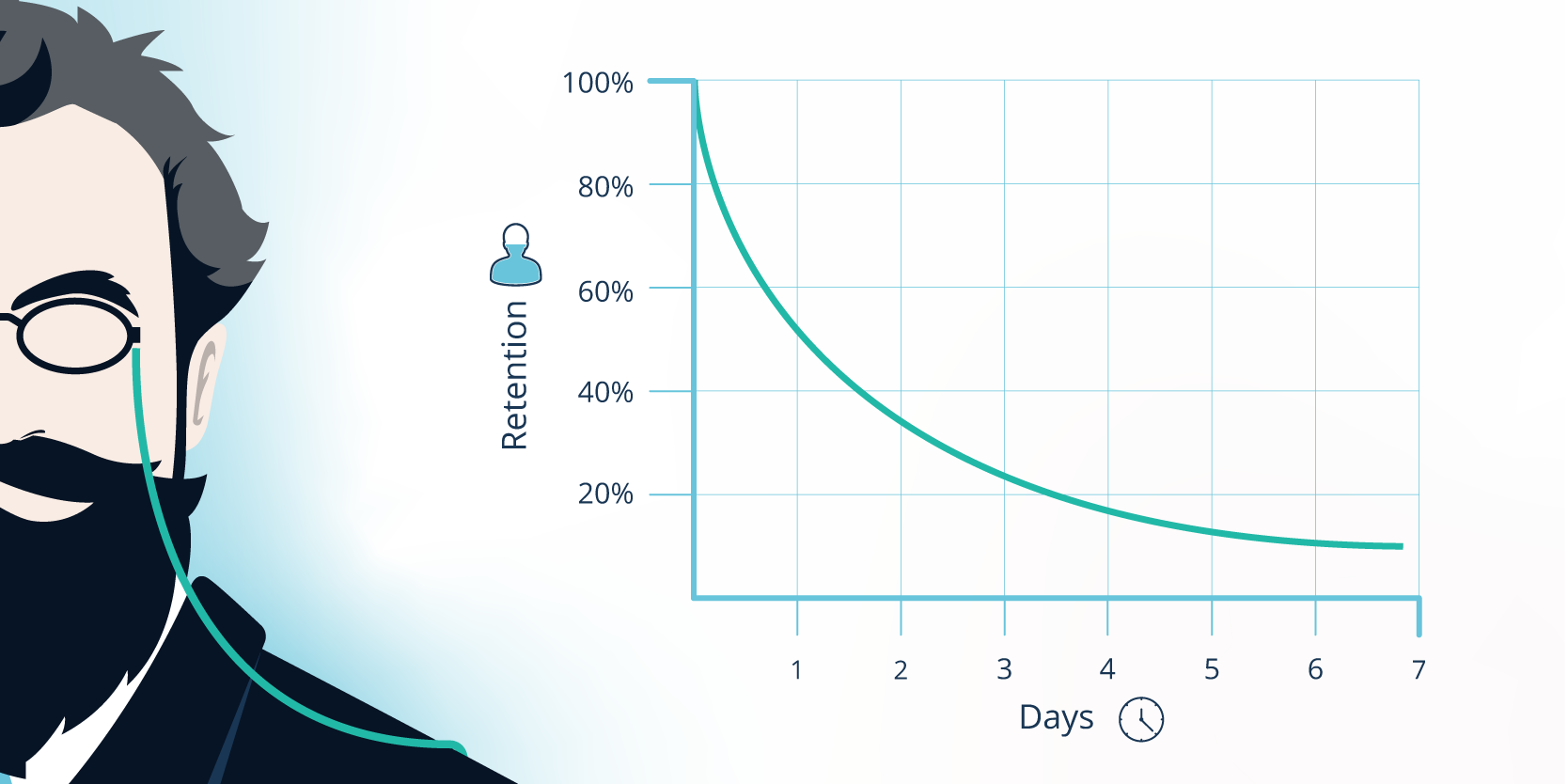
Now, contrary to appearances, Ebbinghaus didn’t invent a fun slide. He’d actually discovered the nature of memory loss over time.
The graph illustrates that when you first learn something, the information disappears at an exponential rate without retention. In other words, you lose most of your newly acquired knowledge in the first couple of days, after which the rate of loss tapers off.
In fact, according to the curve, you forget:
- 50% of all new information within a day.
- And 90% of all new information within a week.
Isn’t that a painful thought? Well, don’t worry, you’ll have forgotten all about it soon enough.
This study was replicated in 2015. The research produced results that ‘are similar to Ebbinghaus’ original data’. Clearly we shouldn’t discard this model just because of its age.
Once he had discovered the exponential decline of memory, Ebbinghaus could identify the factors that contribute to it. Let’s have a look.
What Impacts the Decline of Memory?
Based on his research, Ebbinghaus concluded that the level of retention depends on a few different factors.
1. Strength and Relevance
Perhaps unsurprisingly, individuals can recall stronger memories for longer periods than weaker ones. In turn, the relevance of the information has an impact on how strong the memory is.
For instance, if you’re exposed to a presentation on a subject that doesn’t capture your interest, you’ll lose that information quicker than with content you find relevant or engaging. Simple, right?
As such, we remember less and less of our weaker, non-relevant memories as the days go by, particularly if we don’t try to retain the information. This is because our brain makes room for new memories.
2. Time
In a learning context, the forgetting curve shows that learners will forget an average of 90% of new information within the first seven days.
As such, without retention, we remember less and less information as the hours and days go by. The biggest drop in retention happens soon after learning, which is reflected by the steep fall at the start of the curve.
This is a great argument for ‘just-in-time‘ learning experiences, or learning in the flow of work. If your training programme has not had the impact you hoped for, now you know why.
3. Presentation
The way information is presented can affect learning and how well we store information. In other words, you can make the same piece of knowledge more or less memorable by changing how you communicate it.
Typically, learners find it easier to remember information that has been organised logically and presented clearly. That way your brain can focus on the content of the message rather than trying to decode it.
4. Feelings
Our feelings also affect how well we remember information. In fact, Ebbinghaus suggested that physiological factors, like sleep and stress, influence how well we retain information.
This is typically because these negative physiological states impact our focus and attention. As a result, we struggle to learn efficiently. Similarly, sleep itself, has an important role in the consolidation of memory.
This is in line with Maslow’s hierarchy of needs. This model categorises and prioritises human needs within a five-tier hierarchy, often presented as a pyramid.
Our basic needs, like physiological needs and safety, are at the bottom. We need to satisfy these lower-level needs before moving on to more complex needs.
Why Does Memory Matter?
Simple! Without memory, we could not learn anything at all.
Memory plays a fundamental role in life and learning. After all, it is the only way we can reflect on the past. This, in turn, helps us to operate in the present and think about the future.
In other words, memory is essential for our survival. We typically store information that helps us avoid physical or psychological harm.
For example, we are good at remembering which foods we should avoid to not get an allergic reaction or pathways or areas we should stick to in a more dangerous neighbourhood.
With this in mind, it’s essential to combat the forgetting curve to ensure you remember and store new information. But how can you do this?
How to Combat the Forgetting Curve?
This all sounds pretty scary and daunting, doesn’t it? In fact, it’s clear that Ebbinghaus’ forgetting curve presents a challenge for learning and development professionals. After all, your aim is to create an effective training programme your learners will love and remember.
If your learners forget important information before they’ve had a chance to apply it, you won’t see any change in their behaviour or any impact on your business.
Luckily, now that you understand how memory works, you can do something about it. There are various tactics that you can use to overcome the forgetting curve and make sure you don’t squander your precious learning efforts.
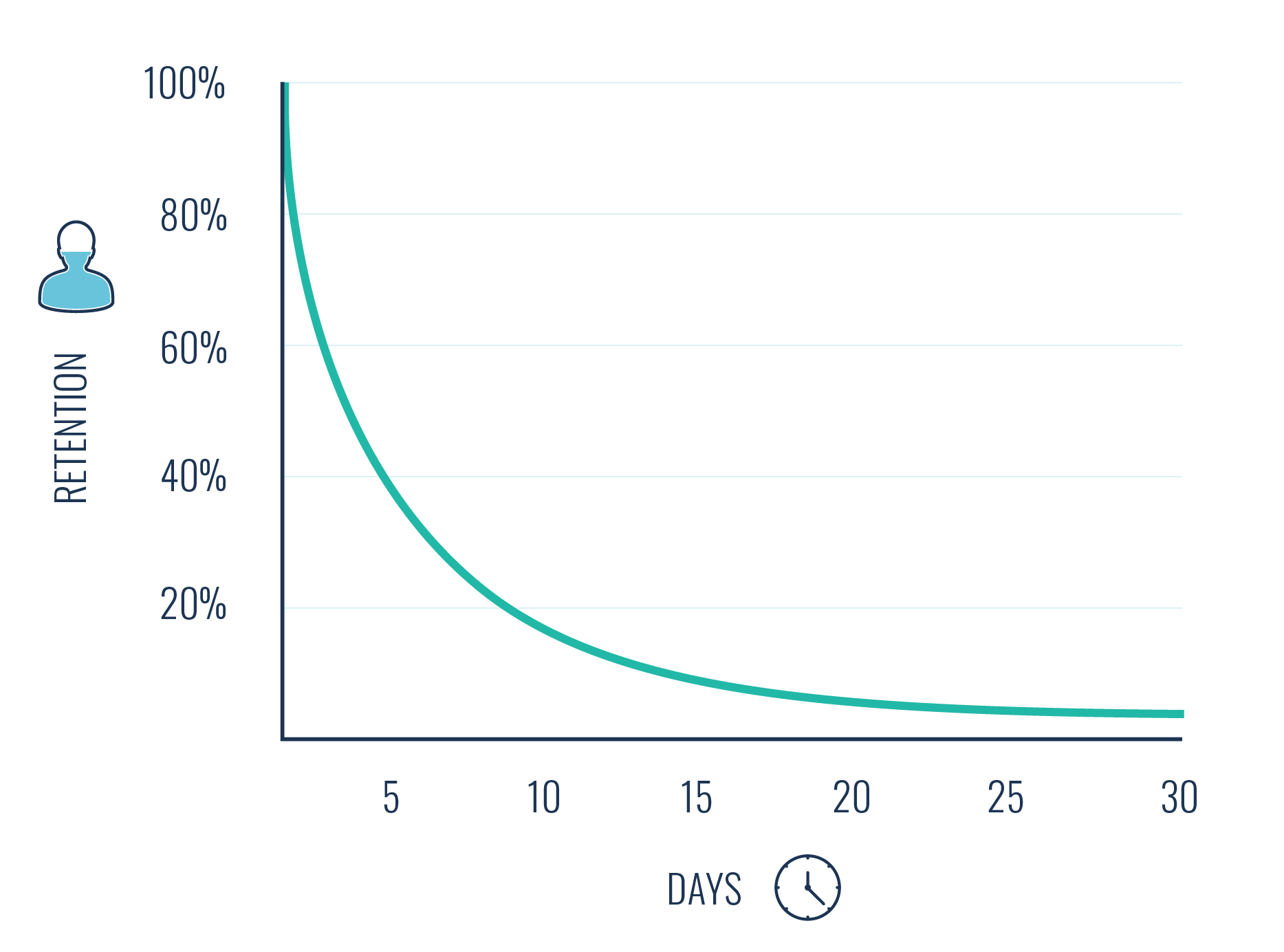
Here are some of our favourite ways to leverage spaced repetition to improve recall in your training initiatives.
1. Reinforce Regularly
![]() Ebbinghaus discovered that reviewing new information at key points on the curve can help you to reduce the rate at which you typically forget. As such, every time you reinforce your training, the rate of decline decreases.
Ebbinghaus discovered that reviewing new information at key points on the curve can help you to reduce the rate at which you typically forget. As such, every time you reinforce your training, the rate of decline decreases.
In fact, simply testing your memory will help it to become stronger. This, in turn, indicates that staging frequent training interventions as part of your learning campaign can help you to solidify new information through active recall.
As the biggest drop happens just hours after learning new information, it’s always a good idea to reinforce training materials within the next few days of the first session.
The more your learners have studied the topic or are familiar with it, the longer gaps you can leave between reinforcement sessions. Take this into account when planning your training structure.
Similarly, Ebbinghaus discovered that information is easier to recall when it’s built upon things you already know. After all, this helps you to understand the context and relevance more effectively.
As such, try to use as many real-world examples as possible. Scenario-based learning can also be effective. This will help you to build upon your learner’s previous knowledge.
This will not only help them to remember the topic better but to comprehend how it can be beneficial in different situations.
2. Improve Clarity
![]() As explored previously, presentation matters as it influences how much energy our brains need to devote to understanding the message itself.
As explored previously, presentation matters as it influences how much energy our brains need to devote to understanding the message itself.
With this in mind, you should strive to make information easier to absorb in the first place.
Rather than writing everything down in lengthy text formats, present information in diagrams or graphics where possible. Similarly, you could create videos or high-impact eLearning courses to help explain new concepts or terms.
The clearer the information, the better your learners’ brains can focus on remembering all relevant details.
3. Keep Things Relevant
 We tend to remember information that has a personal meaning to us, whereas we lose weak and non-relevant memories in just a few hours.
We tend to remember information that has a personal meaning to us, whereas we lose weak and non-relevant memories in just a few hours.
As such, when it comes to your corporate training initiatives, make sure your content is relevant and has a personal meaning to each learner.
An off-the-shelf learning resource won’t have the same impact as a custom-made one. In every piece of content you produce, keep the core purpose of your organisation and training initiative at the forefront of your mind.
Here at Growth Engineering, we call this Epic Meaning. Epic Meaning helps you to create a sense of purpose. This, in turn, makes your training more relevant and helps learners to identify the benefits.
And the more driven your learners are, the more likely they are to impact your organisation’s performance positively. After all, employee training promotes the behaviours that your organisation needs to thrive.
4. Increase Interactivity
![]() People learn better when they’re actively involved than when they’re passive observers. If you don’t give your learners an opportunity to interact with the content, they’ll soon drift off and lose concentration.
People learn better when they’re actively involved than when they’re passive observers. If you don’t give your learners an opportunity to interact with the content, they’ll soon drift off and lose concentration.
There are various ways to increase interactivity and make learning more engaging. However, here at Growth Engineering, we are gamification lovers and experts.
Adding game mechanics to your training programme is an excellent way to engage your learners for longer by making training more fun. Similarly, gamification keeps your learners involved and promotes healthy competition.
Playing a more active role makes the whole training process more relevant to your learners. Similarly, making learning more fun ensures that your audience has the hunger to keep coming back.
5. Make Training Accessible
![]() If you want your training content to stick, you need to make it accessible and convenient for your learners. After all, providing spaced and frequent repetition is difficult if you only provide one training session per month.
If you want your training content to stick, you need to make it accessible and convenient for your learners. After all, providing spaced and frequent repetition is difficult if you only provide one training session per month.
As such, learners should have the ability to complete training whenever they are. This is possible with today’s innovative learning technology. For example, Growth Engineering Learning App makes just-in-time learning easier than ever before.
Mobile learning means that your learners have a much better chance of recollecting their knowledge. Similarly, they can refresh their knowledge autonomously at the point of need.
What’s more, mobile learning and microlearning are a perfect match. Microlearning is learning content is broken down into easy-to-consume, bite-sized chunks.
Together, these approaches supercharge accessibility, which helps you to create a more effective spaced learning experience for your learners.
As a recap, make sure to watch what our very own Juliette Denny has to say about different ways of combating the forgetting curve.
Final Words
There you have it! Ebbinghaus’ forgetting curve in all of its glory.
It’s true that not all memories follow the curve. After all, there are various factors that influence how strong our memories are.
Even still, the forgetting curve enables you to identify the best approaches for spaced repetition. This, in turn, helps you to ensure that your learners remember what they learn.
In a nutshell, make sure to reinforce your training regularly, create clear and meaningful learning experiences and make sure your training content is interactive. These tips alone will get you off to an memorable start.
Looking for more ways to improve your training programme by incorporating different learning studies? Then check out our Guide to Learning Theories and Models!

